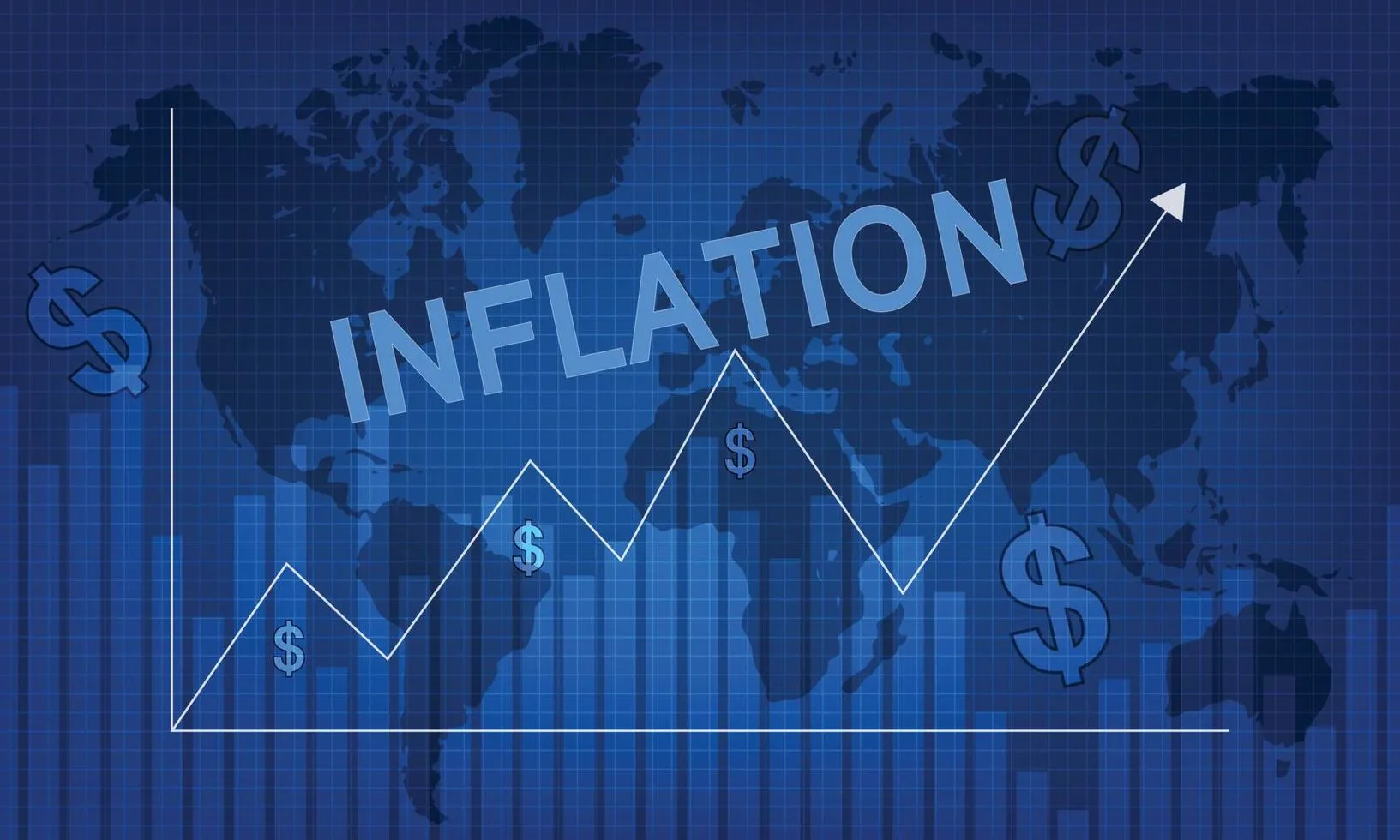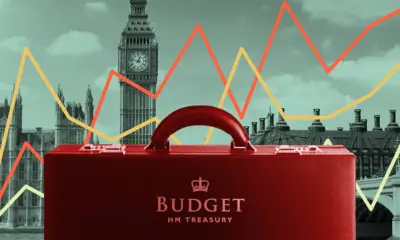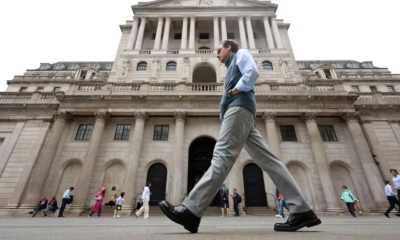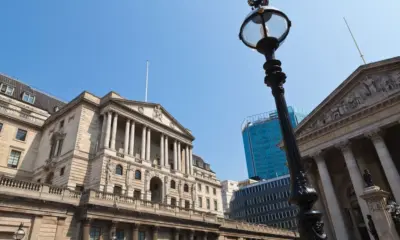Business
Inflation Holds Above Target Even as Consumer Spending Softens

Introduction
Inflation in the United Kingdom remains higher than the Bank of England’s target even as households cut back on spending. The latest figures show the Consumer Price Index increasing by 2.8 percent on an annual basis, above the central bank’s 2 percent goal. While the pace of inflation has eased from last year’s highs, the decline is slower than expected. At the same time, signs of economic weakness are becoming clearer as consumer spending softens and business investment slows.
The persistence of price pressures highlights the challenges policymakers face. The Bank of England must keep inflation contained without tipping the economy into recession. Households, already struggling with higher mortgage rates and energy bills, are becoming more cautious. This combination of stubborn inflation and weaker demand is shaping a complex policy debate that will influence the path of interest rates well into next year.
Inflation Pressures Stay Broad
The latest data reveal that inflationary pressures are spread across several sectors of the economy. Core inflation, which excludes energy and food, stands at 3.6 percent. Services inflation, often a reflection of domestic wage growth, remains above 5 percent. These figures suggest that inflation is increasingly driven by local rather than global factors.
Energy prices have stabilized but remain well above pre-pandemic levels. Fuel costs, utility bills, and transportation expenses continue to add pressure to household budgets. Food prices have eased slightly but remain about 6 percent higher than a year ago due to elevated import costs and supply chain delays. Housing-related expenses, including rents and maintenance, have also risen steadily.
Businesses report that wage pressures are one of the main reasons costs remain high. Many employers are still raising pay to retain workers in a competitive labor market. This cycle of higher wages leading to higher prices makes it difficult for inflation to fall back to target quickly.
Consumers Reduce Spending
Household behavior reflects the squeeze on real incomes. Surveys show that shoppers are trading down to cheaper alternatives, delaying nonessential purchases, and cutting discretionary spending. Retail sales volumes have fallen for four consecutive months, according to the Office for National Statistics. Spending on restaurants, leisure, and travel has also slowed.
Consumer confidence is fragile. Many families remain concerned about job security and future energy bills. While savings rates have ticked up slightly, much of this represents precautionary saving rather than improved financial health. Credit card use has declined for the first time in nearly two years as households try to avoid new debt at high interest rates.
Higher mortgage payments are another major constraint. Millions of borrowers have seen their fixed-rate deals expire, leading to monthly increases of several hundred pounds. As a result, disposable income is shrinking, forcing many families to prioritize essentials over discretionary goods.
Labour Market Begins to Cool
The labour market is showing its first signs of loosening. The unemployment rate has risen to 4.8 percent, up from 4.2 percent earlier this year. Vacancies have fallen for seven consecutive months, suggesting that hiring demand is easing. Wage growth, while still above inflation, has started to slow.
This shift could help reduce inflationary pressure, but it also risks weakening household spending further. Fewer job openings and slower wage increases may lead to reduced consumer confidence. Businesses are responding by limiting new hiring, focusing instead on cost efficiency and automation.
The balance between maintaining employment and curbing inflation remains central to the Bank of England’s policy decisions. A cooling labour market helps in the fight against inflation, but an overly sharp adjustment could deepen the economic slowdown.
Monetary Policy at a Crossroads
The Bank of England faces a complex challenge. Keeping interest rates high helps control inflation but increases the risk of recession. The current base rate of 5.25 percent is already weighing heavily on borrowers and businesses. Monetary Policy Committee members have indicated that they will keep policy data-dependent, waiting for clear evidence that inflation is falling sustainably before making cuts.
Financial markets expect the first reduction in rates to come in mid-2025. Analysts are divided on whether the Bank can maintain its current stance that long. Some argue that maintaining restrictive conditions for too long will further weaken growth. Others believe that inflation risks remain too elevated to justify early easing.
The government has limited fiscal space to support households or businesses, meaning monetary policy will continue to carry the burden of economic adjustment.
Business Response and Sector Performance
Companies are adapting to slower consumer demand and higher input costs. Manufacturing output has declined for three consecutive quarters. Service sector activity has weakened, particularly in hospitality and retail. Many firms are postponing expansion plans, focusing instead on productivity improvements and cost control.
Retailers are discounting earlier than usual to stimulate sales. Small businesses report tighter margins as they struggle to balance rising costs with falling demand. The construction and real estate sectors also face challenges from higher financing costs, leading to fewer new projects.
Yet there are areas of resilience. Financial services, technology, and renewable energy continue to attract investment. These industries benefit from long-term structural trends that remain largely unaffected by short-term consumer weakness. Analysts believe that these sectors could support overall growth even as household spending contracts.
Market Reactions
Financial markets have responded cautiously to the latest inflation data. Government bond yields remain stable, indicating that investors expect rates to stay high for several more months. Sterling has strengthened slightly against the euro and dollar as traders bet that the Bank of England will maintain tighter policy longer than the European Central Bank or the Federal Reserve.
Equity markets have shown mixed reactions. Shares in consumer-facing companies have underperformed, while exporters and energy producers have held up better. Investors are closely watching upcoming labour market and inflation reports for clues about the timing of future policy changes.
Conclusion
The United Kingdom’s battle with inflation is not yet over. Prices remain above target, even as consumer spending weakens and economic growth slows. The persistence of domestic cost pressures, particularly in services and wages, complicates the path forward for policymakers.
For the Bank of England, maintaining credibility while avoiding a deeper downturn is the main challenge. A premature rate cut could reignite inflation, but holding rates too high for too long risks pushing the economy into stagnation.
Households are adjusting to a new reality of higher living costs and reduced disposable income. Businesses are focused on efficiency rather than expansion. Investors are preparing for a period of subdued growth and cautious policymaking.
If inflation continues to ease gradually and the labour market remains stable, modest relief could emerge by late 2025. Until then, the mix of persistent inflation and weak consumer demand will define the UK’s economic environment, shaping spending, investment, and confidence in the months ahead.




















